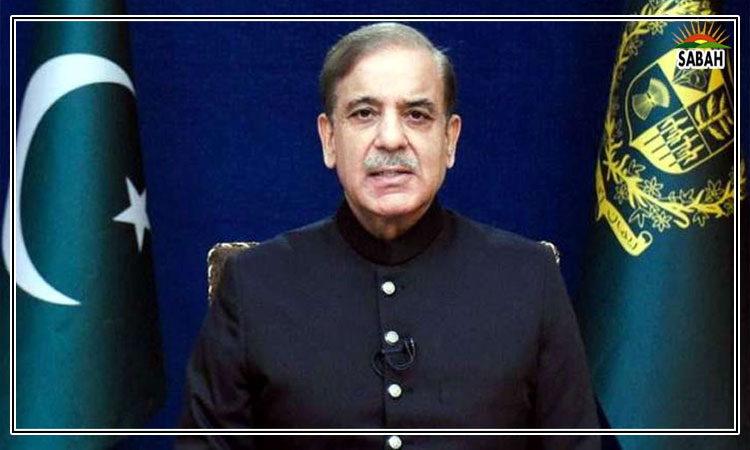Beyond environmental policy…Umar Farooq
THE time has come for Pakistan to redefine its relationship with the environment not as a passive recipient of international aid, but as an active steward of its own natural legacy.
Pakistans environmental predicament is a poignant illustration of the disparity between a nations contribution to global greenhouse gas emissions and the severity of its climate-related challenges. Despite accounting for less than one per cent of global GHG emissions, Pakistan is significantly impacted by climate change. The country has been experiencing an alarming increase in environmental disasters, such as flash floods, extended drought periods, and intense heatwaves. According to a World Bank report, the recent climate-induced disasters in Pakistan, including a heatwave and devastating floods, caused over 1,700 deaths, displaced more than eight million people, and resulted in more than $30 billion in damages and economic losses.
The combined risks of extreme climate-related events, environmental degradation, and air pollution could reduce Pakistans GDP by 18pc to 20pc by 2050. These occurrences highlight Pakistans vulnerability to climate extremes and indicate the urgency for comprehensive strategies to adapt to and mitigate these effects. The reliance on international climate aid, often limited to small grants for seminars and PR campaigns, does not help much. International donors pledged over $9bn to assist Pakistan in recovering from devastating floods last year, but unfortunately the funds never materialised.
The example of the Amazon rainforests contribution to its own rainfall is a striking illustration of the significant role local ecosystems play in their own environmental health. Despite its global significance, the Amazon primarily sustains its climate through its own biological processes, a concept that can be applied to Pakistans environmental situation. The focus on seeking international climate aid and support, while beneficial, may have only a limited impact on Pakistans environmental restoration. Pakistans environmental health, like the Amazons, is significantly influenced by its own conservation and sustainability practices and we need to address environmental challenges through internal efforts.
Addressing Pakistans environmental challenges necessitates a fundamental shift from the prevailing mindset and policy framework. The need of the hour is not just an environmental policy, but a comprehensive land use policy. This policy should be multidimensional, encompassing agriculture, nature conservation and restoration, industrial practices, and housing strategies.
The focus on seeking international climate aid and support may have only a limited impact on Pakistans environmental restoration.
The agriculture strategy in Pakistans proposed land use policy must confront existing practices that have degraded natural capital. The agriculture sector with its distributional consequences is responsible for more than 50pc of GHG emissions. Traditional agricultural methods have led to extensive land degradation, water scarcity, and a decrease in biodiversity. The latest figure indicates that the per capita availability of water in Pakistan has declined to 1,017 cubic metres per person in 2021, significantly below the threshold for water scarcity, while rent-seeking farmers-turned-industrialists heavily lobbying for sugarcane cultivation in the south have made it worse. This has not only contributed to environmental degradation but also made sugarcane a critical part of the consumption basket, despite its intensive water usage and ecological impact. To counteract this, a shift to sustainable agricultural practices is imperative. Practices like efficient water use, organic farming, and crop diversification can rehabilitate the land, conserve water, and enhance biodiversity.
Similarly, nature conservation and restoration, is crucial. Past neglect and overexploitation of natural habitats by unsustainable timber extraction have led to a significant loss of biodiversity and ecosystem services in the country. Forests span merely 5.7pc of Pakistans total land, with the remaining forested areas facing rapid decline. The pressures of commercial logging and the increased demand for resources such as fuel, fodder, building supplies, resin, and charcoal by the growing population have severely impacted forest ecosystems. A strategic focus on restoring and conserving natural habitats forests, wetlands, and grasslands is vital. Another billion-tree tsunami is badly needed.
The industrial and housing strategies also play a critical role. Historically, unregulated industrial growth and urban expansion in Pakistan have led to environmental degradation through pollution, habitat loss, and increased carbon emissions. The industrial sector, with its reliance on fossil fuels for energy, has been a major contributor to air pollution.
Vehicles, particularly those with outdated and inefficient engines, alongside industries like brick kilns and steel mills, emit a wide range of pollutants, including particulate matter (PM2.5 and PM10), nitrogen dioxide, sulphur dioxide, and volatile organic compounds. The new industrial strategy should consist of green conditionalities and needs to promote sustainable industrial practices, focusing on reducing emissions, waste management, and eco-friendly technologies.
Horizontal urban expansion, particularly through unregulated housing developments, is mostly developed without proper registration or adherence to environmental regulations. This has threatened food security by converting fertile lands into residential areas. It also contributes to the urban heat island effect, further intensifying local climate changes. Lahore, Pakistans second-largest city, a clear example, annually grapples with hazardous smog levels that significantly impact the health and quality of life of its residents. And our love for highway zipping through the city centres needs to end.
This is a country which is already beyond water scarcity level, unfortunately ruled by an elite that has had a never-ending affair with subsidised golf courses, which require millions of gallons of water every day. For housing, the strategy should prioritise sustainable urban planning, which includes vertical expansion, efficient land use, sustainable urban transport systems and the integration of green spaces within urban areas.
As Pakistan stands at a critical environmental crossroads, the path ahead is clear: a profound shift in policy and mindset is essential. Embracing a comprehensive land use policy that holistically addresses agriculture, conservation, industry, and housing is not just a choice, but an imperative for a sustainable future.
Courtesy Dawn












